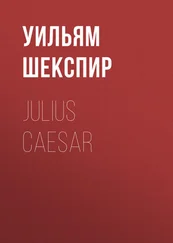Napoleon III - History of Julius Caesar Vol. 2 of 2
Здесь есть возможность читать онлайн «Napoleon III - History of Julius Caesar Vol. 2 of 2» — ознакомительный отрывок электронной книги совершенно бесплатно, а после прочтения отрывка купить полную версию. В некоторых случаях можно слушать аудио, скачать через торрент в формате fb2 и присутствует краткое содержание. Жанр: foreign_antique, foreign_prose, Биографии и Мемуары, на английском языке. Описание произведения, (предисловие) а так же отзывы посетителей доступны на портале библиотеки ЛибКат.
- Название:History of Julius Caesar Vol. 2 of 2
- Автор:
- Жанр:
- Год:неизвестен
- ISBN:нет данных
- Рейтинг книги:4 / 5. Голосов: 1
-
Избранное:Добавить в избранное
- Отзывы:
-
Ваша оценка:
- 80
- 1
- 2
- 3
- 4
- 5
History of Julius Caesar Vol. 2 of 2: краткое содержание, описание и аннотация
Предлагаем к чтению аннотацию, описание, краткое содержание или предисловие (зависит от того, что написал сам автор книги «History of Julius Caesar Vol. 2 of 2»). Если вы не нашли необходимую информацию о книге — напишите в комментариях, мы постараемся отыскать её.
History of Julius Caesar Vol. 2 of 2 — читать онлайн ознакомительный отрывок
Ниже представлен текст книги, разбитый по страницам. Система сохранения места последней прочитанной страницы, позволяет с удобством читать онлайн бесплатно книгу «History of Julius Caesar Vol. 2 of 2», без необходимости каждый раз заново искать на чём Вы остановились. Поставьте закладку, и сможете в любой момент перейти на страницу, на которой закончили чтение.
Интервал:
Закладка:
159
De Bello Gallico , I. 6.
160
Plutarch, Cæsar , 18.
161
This part of the Jura on the left bank of the Rhone is called the Mont du Vuache .
162
De Bello Gallico , I. 8.
163
M. Queypo, in his learned work on the weights and measures of the ancients, assigns to the Roman foot, subdivided into twelve inches, a length of 0·29630m. The Roman pace was five feet, so that the mile was equivalent to a length of 1481·50m.
164
Dio Cassius says that “Cæsar fortified with retrenchments and walls the most important points.” (XXXVIII. 31.)
165
The retrenchments which Cæsar calls murus fossaque could not be a wall, in the usual acceptation of the word: first, because a wall would have been but a weak obstacle; further, because the materials were not found on the spot; and lastly, because if so great a quantity of stones had been collected on the bank of the Rhone, we should still find traces of them. I have therefore sought another explanation, and thought that murus might be understood of a natural escarpment rendered steeper by a slight work. Penetrated with this idea, I sought Baron Stoffel, the commandant of artillery, to inspect the localities, and the result of his researches has fully confirmed my suppositions. The following is a summary of his report: —
Considered in its ensemble , from Geneva to the Pas-de-l’Ecluse, the Rhone presents the appearance of an immense fosse from 100 to 120 mètres broad, with abrupt and very elevated scarp and counter-scarp. The parts where it does not present this character are few, and of relatively small extent. They are the only ones where operations for passing the river could be attempted – the only ones, consequently, which Cæsar would have need to fortify on the left bank.
1. From Geneva to the confluence of the Arve and the Rhone, an extent of 1½ kilomètres. Breadth of the river, 90 to 100 mètres. – The left bank is flat in the whole of this extent. The right bank has escarpments almost vertical, the height of which varies from 15 to 35 mètres. ( See Plate 3 , mean profile between Geneva and the Arve.) No attempt at passage could have taken place, neither at Geneva, nor between the town and the Arve.
2. From the Arve to the plateau of Aire-la-Ville, extent 12½ kilomètres. – After leaving the confluence of the Arve, the heights of the right bank of the Rhone increase in elevation; the escarpments become formidable. – The left bank is bordered with similar escarpments, and the river runs thus between high and abrupt banks, everywhere impassable. It preserves this character to a kilomètre above the ravine of Avril, near Peney. The profiles a a and b b give an idea of the escarpments of the banks from the Avre to the ravine of Avril. ( See Plate 3 .) – The heights which, on the right bank of the Rhone, extend from Vernier to Peney, sink gradually from one of these villages towards the other, and they form to the east of the ravine of Avril a plateau, the mean elevation of which above the bed of the river is only 20 mètres. Opposite, on the left bank, extends the plateau of Aire-la-Ville. Length 1,700 mètres; breadth, 700 mètres; mean elevation above the bed of the Rhone, 20 to 25 mètres. The heights of the Peney are well disposed for the establishment of an army, and the plateau of Aire-la-Ville would permit an army, the Rhone once passed, to deploy easily. But, in spite of these advantages, it is certain that the Helvetii attempted no operation on this side, for the Rhone flows at the foot of a slope of the height of from 14 to 16 mètres and an inclination of at least 45 degrees.
3. From the plateau of Aire-la-Ville to the point of Epeisses, extent 6 kilomètres. – Down the river from the escarpments of Peney, the heights of the right bank (heights of Russin) form with those of the left bank an immense amphitheatre, nearly circular, the arena of which would be the ground represented green on Plate 3 (diameter, 1½ kilomètres). From the heights of Russin we can descend into the plain to the water of the river. The Rhone, in this part, has never been deep or rapid. The left bank is little elevated, entirely flat opposite the mill of Vert, and the slope of the heights which command it is far from impracticable.
Thus, it was here possible for the Helvetii to effect the passage of the river, and climb the heights of the left bank, if they had not been fortified or guarded. This operation presented least difficulty in the part t t o . And we can hardly doubt that the Romans fortified it to add to the natural obstacles, which were insufficient in this extent. ( See the profile c c. )
An attentive examination of the locality, the discovery of certain irregularities of ground, which we may be allowed to consider as vestiges, lead us to explain in the following manner the expression murum fossamque perducit .
Cæsar took advantage of the mean heights at the foot of which the Rhone flows, to cause to be made, on the slope towards the river, and beginning with the crest, a longitudinal trench, of such a depth that the main wall had an elevation of 16 feet. The earth arising from the excavation was thrown down the side of the slope, and the crest was furnished with palisades. ( See the profile of the retrenchment. ) It was, properly speaking, a fosse, the scarp of which was higher than the counter-scarp.
The hills on the left bank, which rise opposite Russin, are accessible, especially in an extent of 900 mètres, reckoning from the point where the ravine which descends to Aire-la-Ville opens upon the river. They form there, among other peculiarities of the ground, a terrace 8 mètres in breadth, rising from 13 to 14 mètres above the plain, and descending to this by a tolerably uniform talus of 45 degrees.
The Romans would be able to prevent the access by means of the trench just described. They, no doubt, continued it to the point o , where the terrace ceases, and the heights become impracticable. It would then have been from 800 to 900 mètres long.
If we continue to descend the Rhone, we meet, on the left bank, first with the perpendicular escarpments of Cartigny, which are 70 or 80 mètres in height, and then abrupt beaches to near Avully. Below Cartigny, the Rhone surrounds a little plain, very slightly inclined towards the river, and presenting a projection of land ( v r ) from 5 to 6 mètres high, with a talus of less than 45 degrees. The bank being of small elevation, the Helvetii might have landed there. To prevent this, the Romans opened, in the talus which fronted the Rhone, a trench similar to the preceding; it was 250 mètres long.
The heights of Avully and Epeisses leave between them and the river a tolerably vast space, composed of two distinct parts. The first is formed of gentle slopes from Avully to a projection of land, q p ; the other part is a plain comprised between this projection of land and the left bank of the river. On the right bank a torrent-like river, the London, debouches into flat ground named La Plaine. The Helvetii might have made their preparations for passing the Rhone there, and directed their efforts towards the western point of La Plaine, in face of the low and flat land comprised between the left bank and the escarpment q p . In this part the left bank is only from 1½ to 2 mètres high. Moreover, the slopes of Avully are not difficult to climb, and therefore the Romans must have sought to bar the passage in this direction. ( See the broken profile d e f. ) The escarpment q p , from its position and height, is easy to fortify. Its length is 700 mètres; its mean elevation above the plain, 18. It presents to the river a talus of less than 45 degrees. The Romans made in this talus , along the crest, a trench, forming wall and fosse. Its length was 700 mètres.
Читать дальшеИнтервал:
Закладка:
Похожие книги на «History of Julius Caesar Vol. 2 of 2»
Представляем Вашему вниманию похожие книги на «History of Julius Caesar Vol. 2 of 2» списком для выбора. Мы отобрали схожую по названию и смыслу литературу в надежде предоставить читателям больше вариантов отыскать новые, интересные, ещё непрочитанные произведения.
Обсуждение, отзывы о книге «History of Julius Caesar Vol. 2 of 2» и просто собственные мнения читателей. Оставьте ваши комментарии, напишите, что Вы думаете о произведении, его смысле или главных героях. Укажите что конкретно понравилось, а что нет, и почему Вы так считаете.












